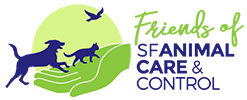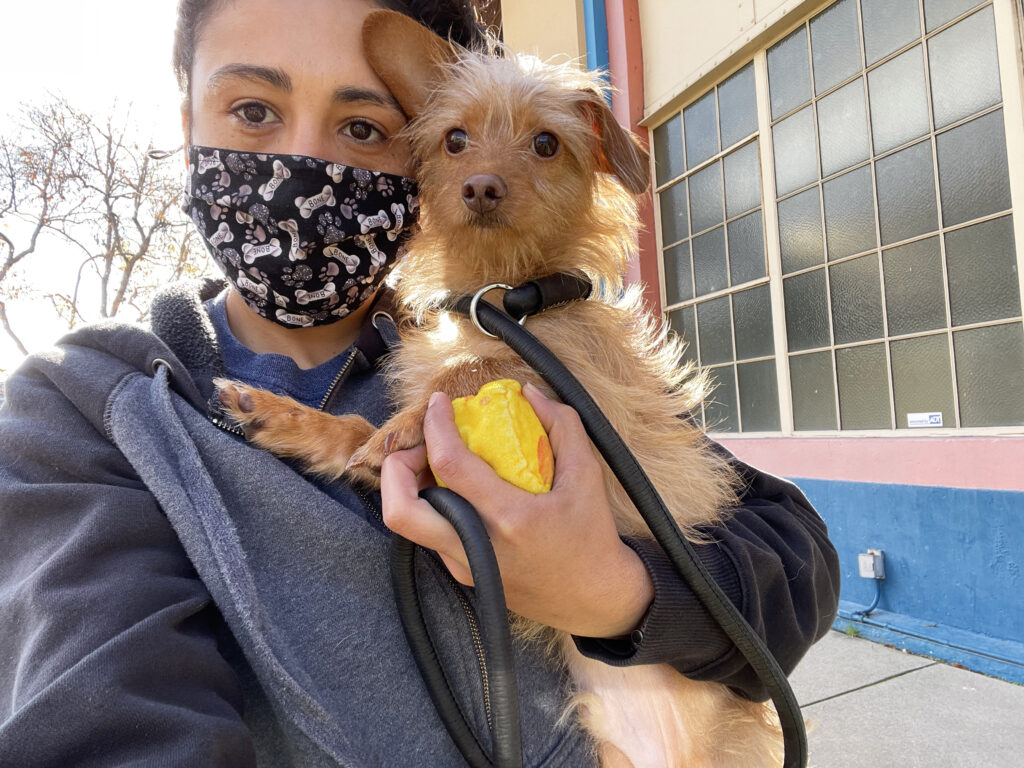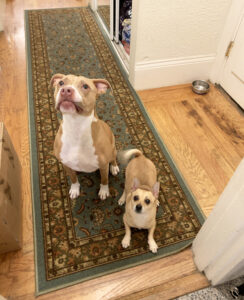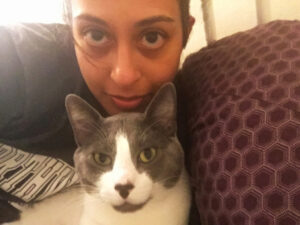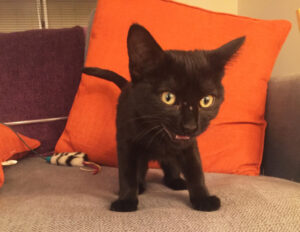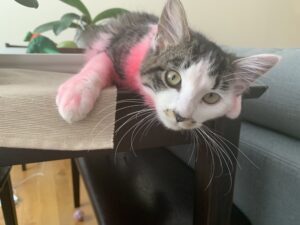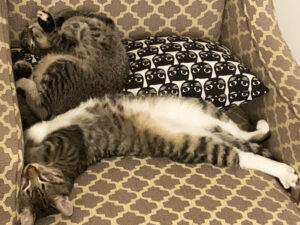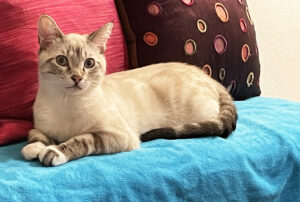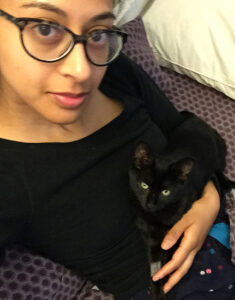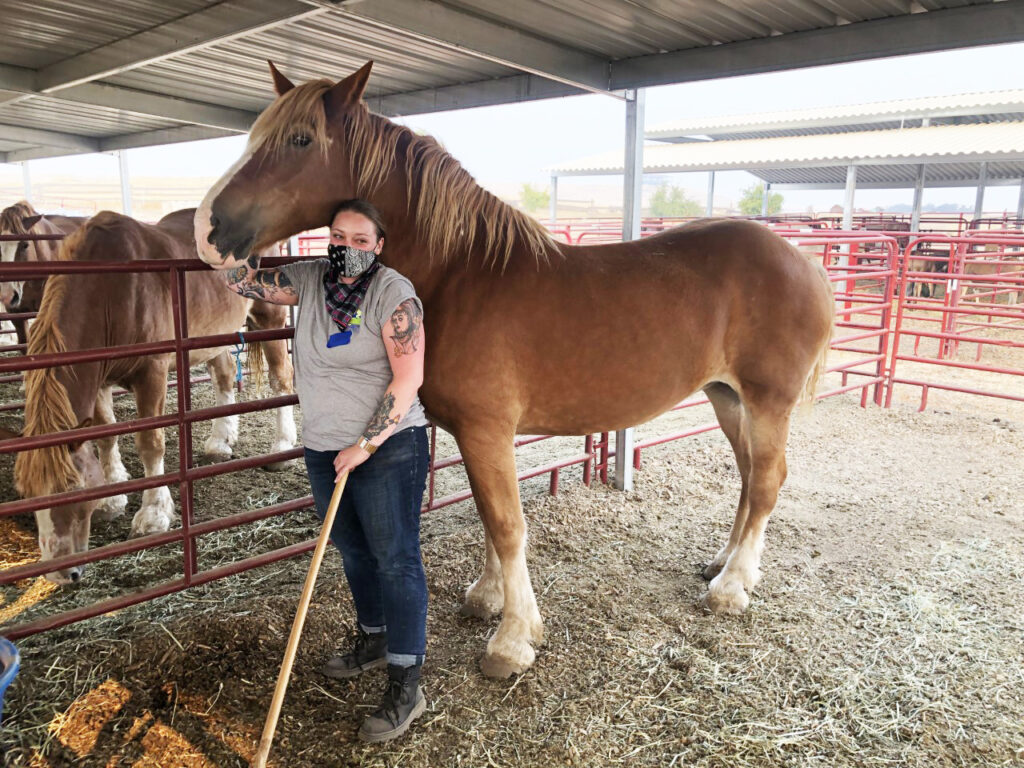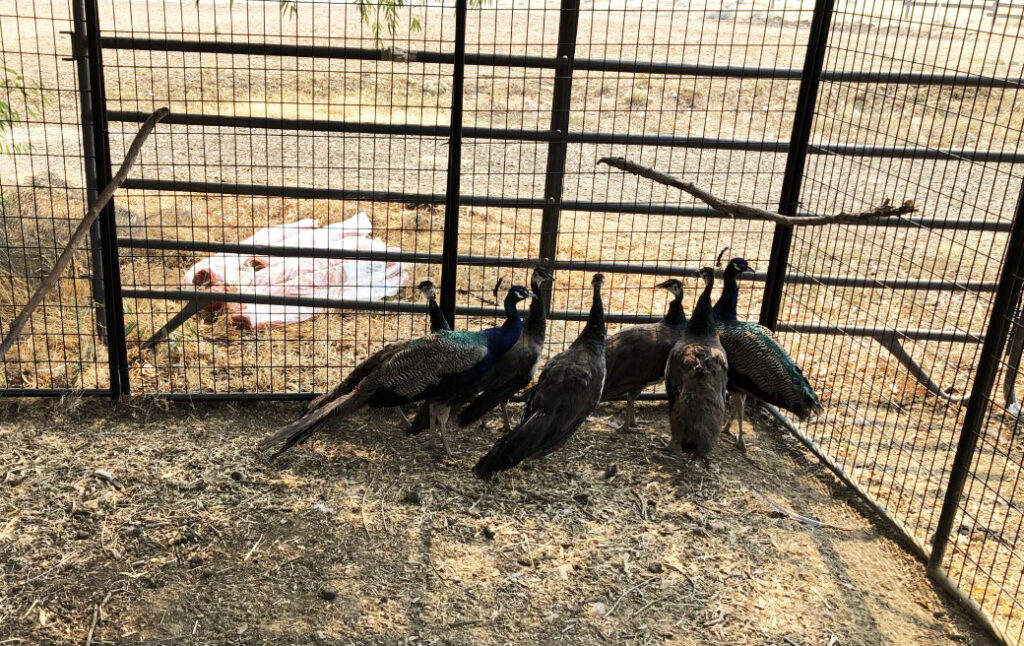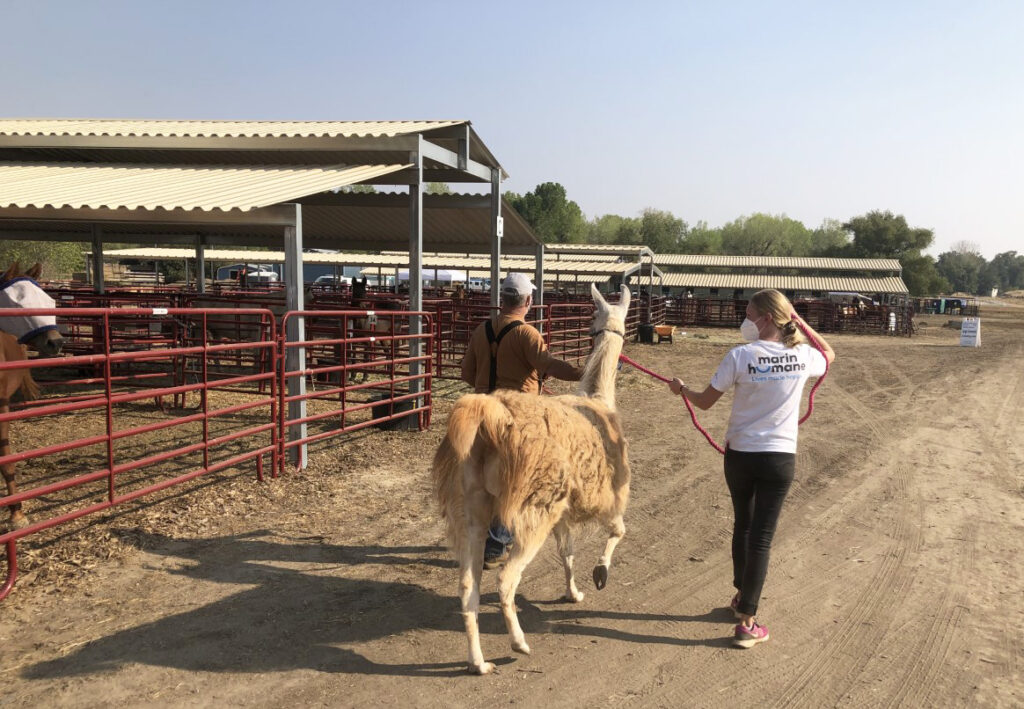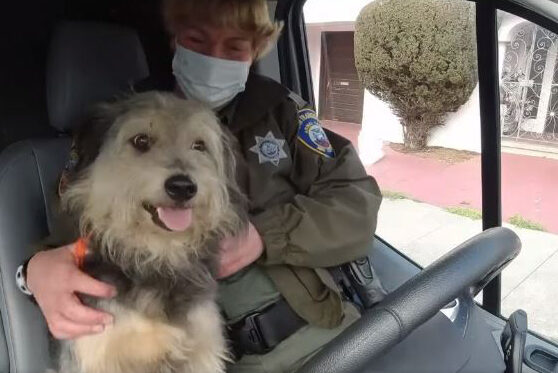
By Rebecca Fenson,
Animal Control Officer, #22
Over the past several months I had the privilege of having the Live Rescue film crew, Alecc and Brandon, in the field with me. Several other officers were also filmed, and they did a wonderful job representing SFACC and our work. This is my experience.
Alecc would interact and liaise with the public, other city agencies such as SFPD and SFFD, and anyone on scene who might be involved with the call. He would explain what the filming was about and get permission forms signed.
Brandon was the cameraman. He handled the filming and facilitated our commentary, including the lead-in comments and the wrap-ups. All that talking we did–that was at Brandon’s prompting. We don’t generally wrap up our activities cheerily announcing to anyone within earshot, “I feel great about this one … this is why we do this.” Or, “This sweet pup is gonna have a wonderful life from here on out!” Or, “What a victory, rescuing a raccoon, then releasing him back to the wild!” (Officer Pone is always wildly enthusiastic and interactive, so this might not apply to her.)
For me, this was the biggest challenge: talking about the call before, during, and afterward so the audience had context for what transpired. Drama, suspense, excitement, and, especially, a build-up to a happy outcome are the ingredients for a good segment on Live Rescue. It was a bit too choreographed for me. After I loaded the dog into the van or released an animal to the wild, or when a relieved family came to redeem an exuberant dog, Brandon would ask, “So, what happened here? What’s the next step? And how do you feel, is this the great outcome you wanted?” Meanwhile, I’m thinking, what is my next call? Or, where is the nearest bathroom? Being a New Yorker, it was all I could do to not summarize a call with, “She’s safe, she’s back with her family, yada going to yada. Let’s roll.”
That is not to say the crew got in the way…they did not. The crew was very respectful of the work we were doing, and they went out of their way not to be a distraction or to impact the call or our work in any way. I really appreciated that. They also were incredibly nice, friendly, and easy to be with.
I was always sure to try and convey information about the animal that was accurate. And if I wasn’t sure about something, I would qualify what I was saying or be more vague. For example, I did not want to be filmed calling a Boston Terrier a Frenchie, or a vole a gopher. And because we often have to assess an animal’s condition out in the field, it can be tricky initially, knowing if a raccoon is sick or injured or is just napping; wildlife will do everything they can to avoid appearing weak or vulnerable. So I tried to not be too declarative about anything I wasn’t sure of.
We had to judge whether the film crew should accompany us on some calls. Most of the time, this was easy. For example, they would remain in the vehicle when I was responding to a report of abuse or welfare violations, when I was seizing an intact pit, or on calls for protective custody of a dog whose guardian was hospitalized, in jail, or had died. Those are some of the many calls we regularly respond to that would not be appropriate to film.
Occasionally, Brandon and Alecc decided to hang back on calls that would have been great on air. One example is a call I handled for a code 2 (priority) sick raccoon. I told Brandon that, based on his reported condition, the raccoon was likely to be euthanized. So, they did not accompany me. On scene, the person who called SFACC emergency dispatch showed me the raccoon in the backyard of their business … a brewery. I approached the raccoon, who was lying on his stomach, making a groaning sound. This was not a demeanor I had ever seen a raccoon in, nor were these typical sounds. All that was missing was a foam “number 1” finger and a plastic cup. Was my raccoon drunk? The staff admitted that it was possible that he had accessed some alcohol-in-the making. I scooped up the party boy with a catch pole. He did not put up a struggle, flopping into the cage like a furry jellyfish, still groaning. I left the brewery, saying I hope he’d paid his tab and, on the more serious side, confirming the place was secure and that this break-in was an anomaly. I brought the raccoon back to SFACC, and reported to the vet staff that I suspected this guy had a few too many and maybe we should let him sleep it off. After examining him, they agreed. Sure enough, after a few hours, the raccoon sobered up. Swing shift released him that night. The film crew was very disappointed that they had elected not to film this one. From then on, during calls for sick wildlife, Brandon would say, “If the animal is drunk, let us know immediately!”
One of my favorite and unanticipated aspects to having the film crew ride along was seeing San Francisco through their eyes. Brandon, from Salt Lake City, constantly pointed out unique architecture and art. He marveled at the steep hills and the famous SF views of the bay. Where I would drive around remembering suffering animals and challenging interactions I’d had in certain locations, he’d point out whimsical buildings and beautiful murals. He loved the classic cars cruising the city. Meanwhile, I’d wonder about the nearest good burrito place and complain about the traffic. His fresh perspective on San Francisco was a welcome change.
I’m pretty sure during the course of our conversations, Brandon and Alecc learned something about humans’ relationship to animals. They learned that while pigeons might not be as novel and as impossibly cute as baby raccoons, they matter just as much.
My favorite part of being with Alecc and Brandon was when they asked me if I wanted to help animals because they have no voice. I replied that all animals have a voice, we’re just not listening. That sparked a conversation about the rich and complex lives that animals have─which is the reason I do this job─and why I agreed to do the show.
